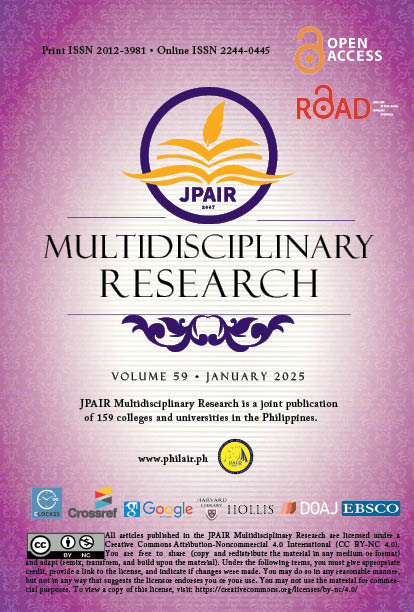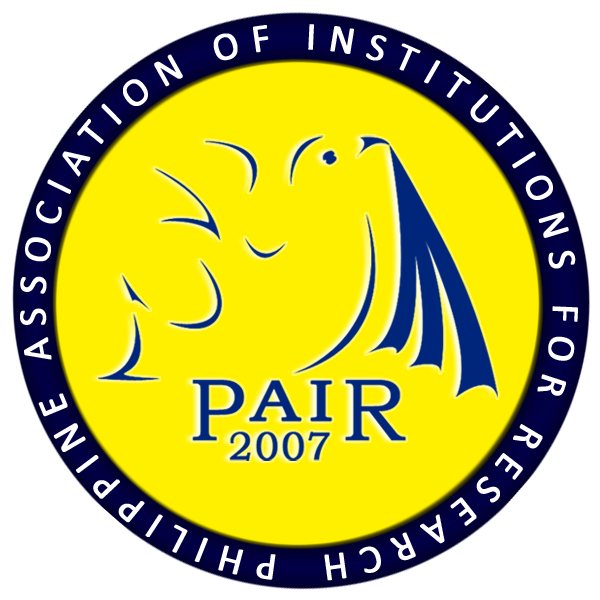Cosmeceutical Potential of Artocarpus camansi Fruit Peel Extract as Bioactive Ingredient in Topical Serum Formulation
DOI:
https://doi.org/10.7719/jpair.v59i1.924Keywords:
Camansi, Fruit Peel Extract, Bioactive Ingredient, Topical Serum Formulation, Experimental Research, Health ScienceAbstract
The global use of plant-based cosmetics has increased dramatically as consumers become more aware of the long-term health advantages of natural products. The Philippines, a tropical Asian country, has numerous local plant resources with promising medicinal value while preserving its unique biodiversity and inherited medicinal value. The present study deals with the utilization of Artocarpus camansi fruit peel extract as bioactive component with pharmacological activity in cosmetic formulation. This experimental research involved extraction of phenolic compounds, formulation of topical serum, and in vitro investigation of antibacterial, anti-inflammatory, and photoprotective activity of A. camansi topical serum (ACTS). The pure extract yielded 22.5 mg/g total phenolic content. Among the three formulations, 5% ACTS was found to be the most effective antibacterial, anti-inflammatory, and photoprotective topical serum compared to 1% and 3%. The results of one-way ANOVA revealed that there was a statistically significant difference among the formulations compared to the positive and negative controls. Post-hoc confirmed that the positive controls provided the highest activity among the treatments. A. camansi fruit peel extract can therefore be identified as a potential bioactive ingredient in cosmetic formulations for serums which can be effective in improving skin and providing protection from the external environment.
Downloads
References
Abbas, N., Arshad, M. S., Hussain, A., Irfan, M., Ahsan, M., Rasool, M. F., & ur Rehman, M. H. (2017). Development and validation of a spectroscopic method for the simultaneous analysis of miconazole nitrate and hydrocortisone acetate in pharmaceutical dosage form. Tropical Journal of Pharmaceutical Research, 16(2), 413-420.
Afaq, F., & K Katiyar, S. (2011). Polyphenols: skin photoprotection and inhibition of photocarcinogenesis. Mini reviews in medicinal chemistry, 11(14), 1200-1215.
Ante, I., Aboaba, S., Siddiqui, H., & Choudhary, M. I. (2016). Essential oils of the leaf, stem-bark, and nut of Artocarpus camansi: Gas Chromatography-Mass Spectrometry analysis and activities against multidrug-resistant bacteria. Journal of Herbs, Spices & Medicinal Plants, 22(3), 203-210.
Downloads
Published
Issue
Section
License
Copyright (c) 2025 Richie G. Bayuran, Christine Joy C. Blazo

This work is licensed under a Creative Commons Attribution-NonCommercial 4.0 International License.
Open Access. This article published by JPAIR Multidisciplinary Research is licensed under a Creative Commons Attribution-Noncommercial 4.0 International (CC BY-NC 4.0). You are free to share (copy and redistribute the material in any medium or format) and adapt (remix, transform, and build upon the material). Under the following terms, you must give appropriate credit, provide a link to the license, and indicate if changes were made. You may do so in any reasonable manner, but not in any way that suggests the licensor endorses you or your use. You may not use the material for commercial purposes.




















